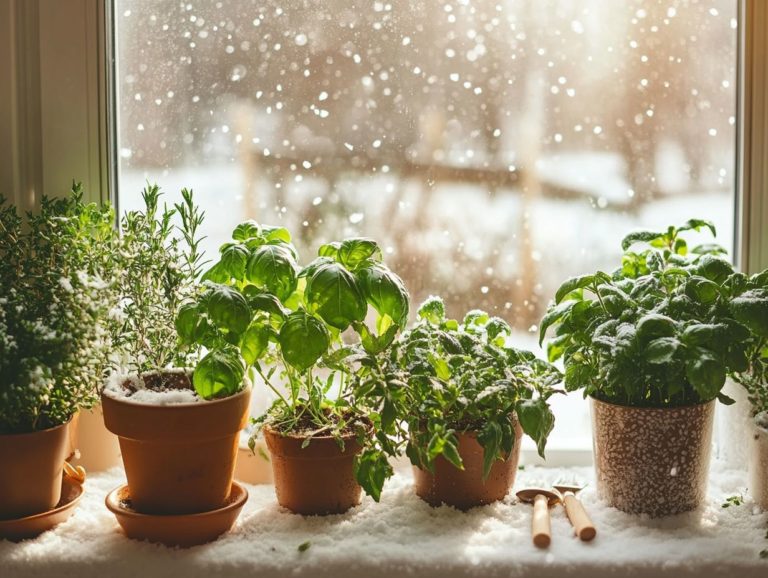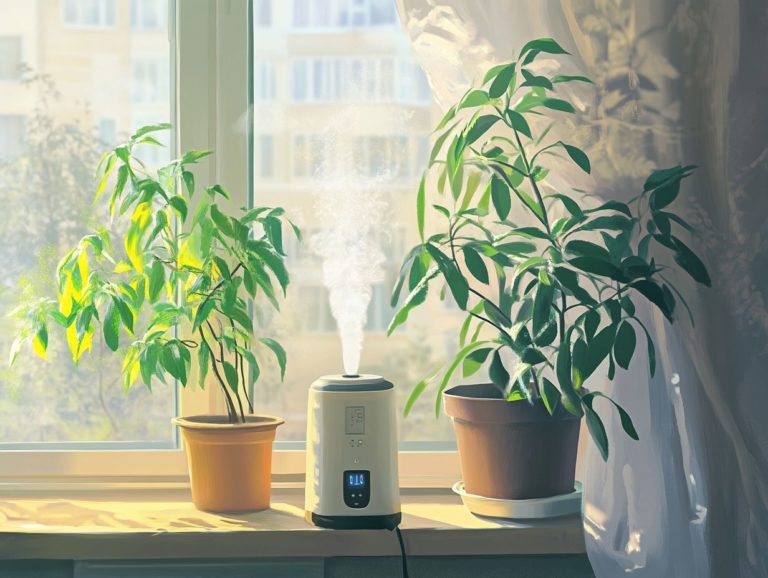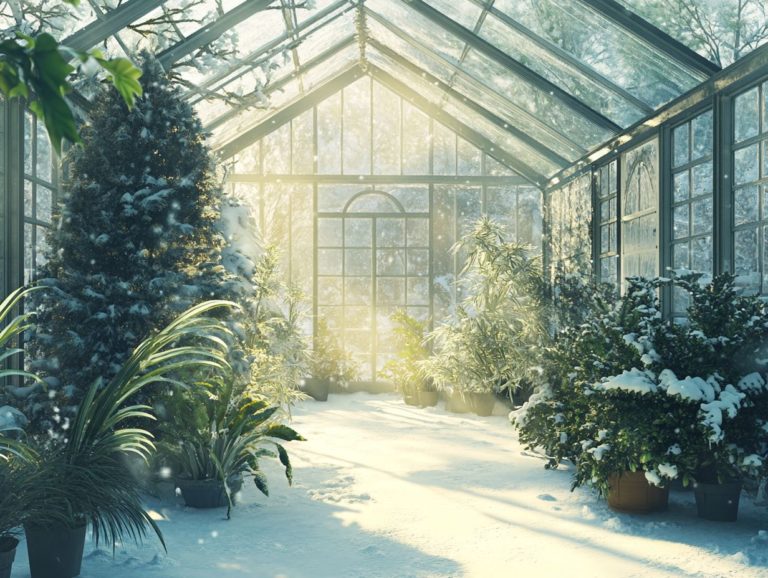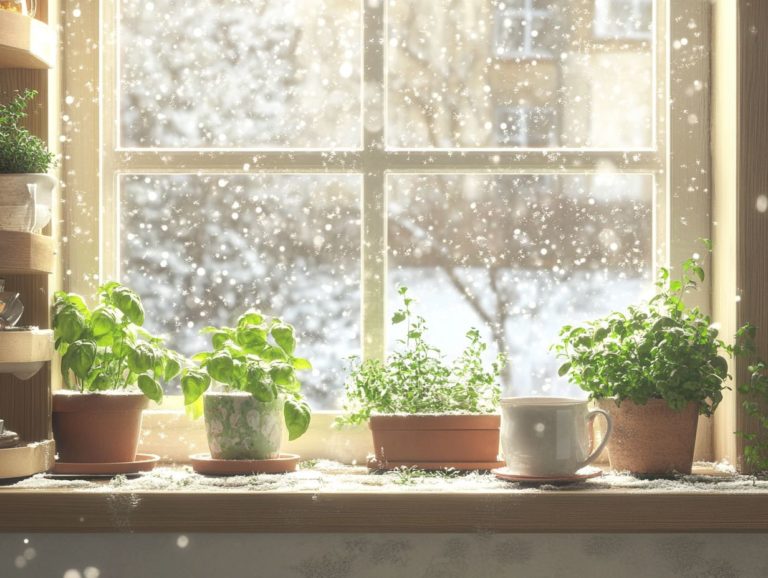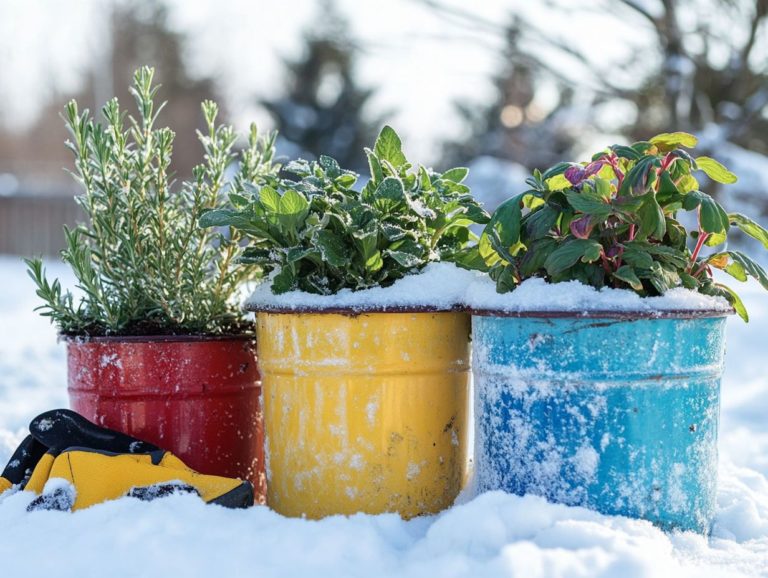Planting Garlic in Winter: Best Practices
Garlic enthusiasts understand the unparalleled satisfaction that comes from cultivating your own homegrown garlic. Winter planting can lead to remarkable results.
This guide explains why winter is the best time to plant garlic. You ll find tips on selecting the right varieties and preparing your soil.
You will learn the step-by-step planting process. Additionally, you ll discover how to care for your garlic during the chillier months and the best practices for harvesting and storing garlic to guarantee a flavorful abundance.
Unlock the secrets to achieving success with your winter garlic planting!
Contents
- Key Takeaways:
- Benefits of Planting Garlic in Winter
- Preparing for Winter Garlic Planting
- Planting Garlic in Winter
- Caring for Winter Garlic
- Harvesting and Storing Winter Garlic
- Frequently Asked Questions
- What is the best time to plant garlic in winter?
- Can I plant garlic in winter if the ground is frozen?
- What is the best location to plant garlic in winter?
- How should I prepare the soil for planting garlic in winter?
- Do I need to water my garlic during the winter?
- What should I do if the weather turns unseasonably warm after I plant my garlic in winter?
Key Takeaways:
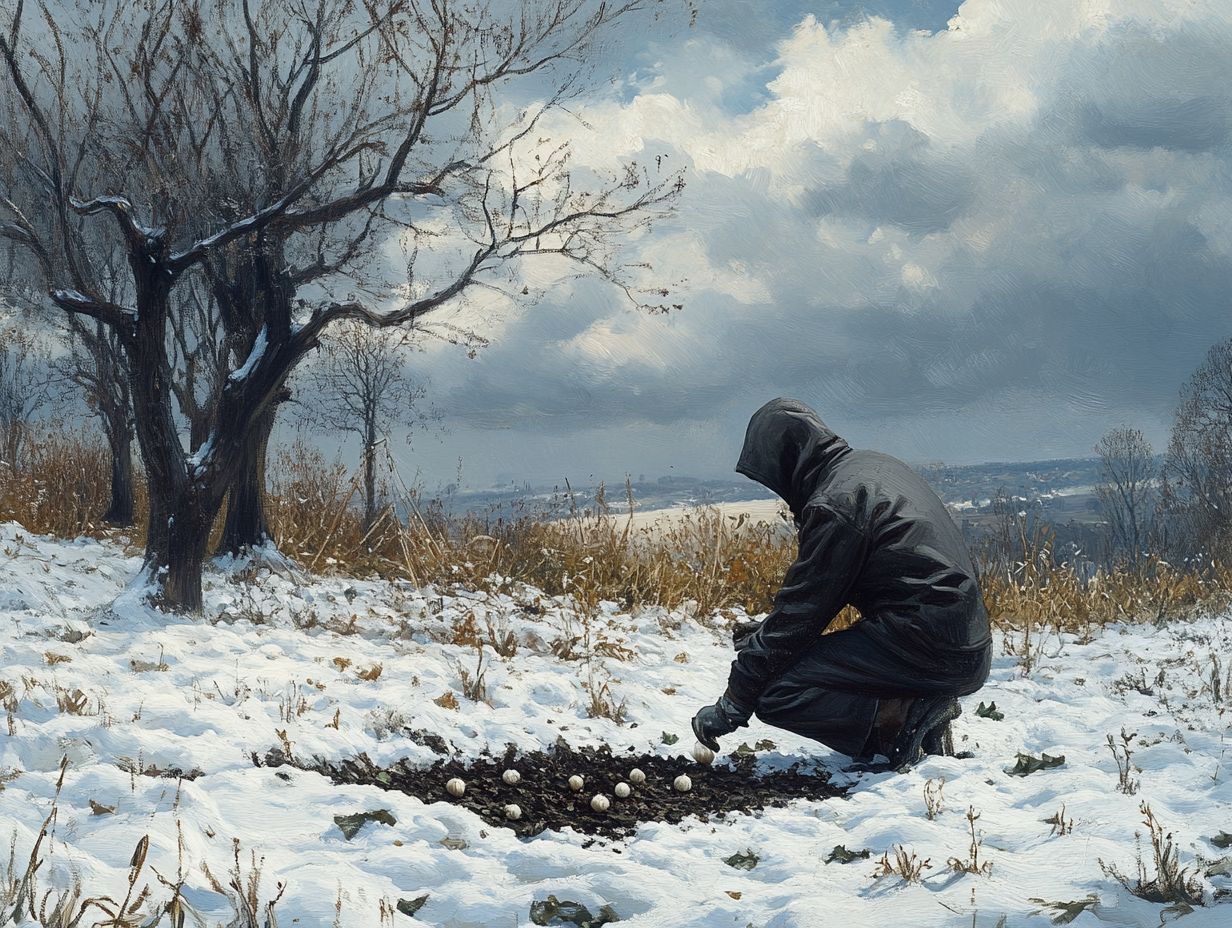
- Winter planting is ideal for garlic as it allows the bulbs to develop strong roots and establish themselves before spring growth.
- To prepare for winter garlic planting, choose the right garlic varieties and ensure that the soil is well-draining and enriched with compost.
- When planting garlic in winter, follow a step-by-step guide, including proper spacing, planting depth, and mulching to ensure successful growth.
Benefits of Planting Garlic in Winter
Planting garlic in winter presents a wealth of advantages that elevate both the health and yield of your garden. This practice not only boosts the likelihood of successful garlic growth but also optimizes nutrient management within the soil, making it essential to follow best practices for winter gardening.
Winter garlic tends to be hardier and better at withstanding cold climates. This enables your garlic cloves to develop robust root systems before the growing season kicks off. Using organic mulch protects against frost and improves soil temperature, resulting in healthier garlic bulbs when it s time to harvest.
Why Winter Planting is Ideal for Garlic
Winter planting is the perfect choice for garlic as it aligns seamlessly with the plant’s natural growth cycle. This allows the cloves to thrive through the colder months. Hardneck garlic, in particular, shows remarkable resilience during winter and flourishes in cooler temperatures. Softneck garlic also appreciates the brisk conditions. This seasonal approach leads to a more substantial yield come harvest time.
By opting for winter planting, you can take advantage of soil temperatures that promote healthy root development. Cooler soil retains moisture more effectively, reducing the need for frequent watering and conserving valuable resources. Varieties like ‘Music’ and ‘German White’ shine under these conditions, known for their robust flavor profiles and impressive storage capabilities.
Winter planting enables the cloves to establish a strong foundation before spring’s vigorous growth phase. This results in garlic that not only stores well but is also rich in essential oils and nutrients. It s a prized choice among culinary aficionados.
Preparing for Winter Garlic Planting
Preparing for winter garlic planting is an essential step that lays the foundation for a robust and healthy garlic crop. Start by selecting high-quality, disease-free garlic cloves that are well-suited to your region.
This process requires diligent soil preparation, which involves testing the soil pH, enriching it with organic matter, and ensuring proper drainage. Before winter arrives, adding a layer of mulch will help retain soil moisture and provide insulation against harsh temperatures.
This creates an ideal environment for your garlic to flourish and thrive. Start your winter garlic planting today for a bountiful harvest!
Choosing the Right Garlic Varieties
Choosing the right garlic varieties is crucial for successful winter planting. Different types showcase varying levels of hardiness and flavor profiles.
If you re in a colder climate, popular hardneck garlic varieties, such as Music and Bogatyr, are your best bets. On the other hand, if you enjoy milder conditions, softneck options, including Polish Softneck and German White, will thrive for you.
Selecting the right garlic cloves can significantly influence both the yield and cooking quality of your harvest. Each variety brings its own unique taste and texture to your kitchen, allowing you to explore a range of culinary applications, from roasting to using them raw in dressings.
When sourcing high-quality garlic cloves, consider turning to local farmers’ markets or specialized seed companies that prioritize organic practices. This often ensures you get the freshest and most vigorous options available. Keep an eye on the size and firmness of the bulbs; it can make a difference!
Larger cloves typically produce more robust plants, while firm cloves are less prone to disease. By understanding these nuances, you enhance your home gardening experience and elevate the flavor in countless dishes.
Preparing the Soil
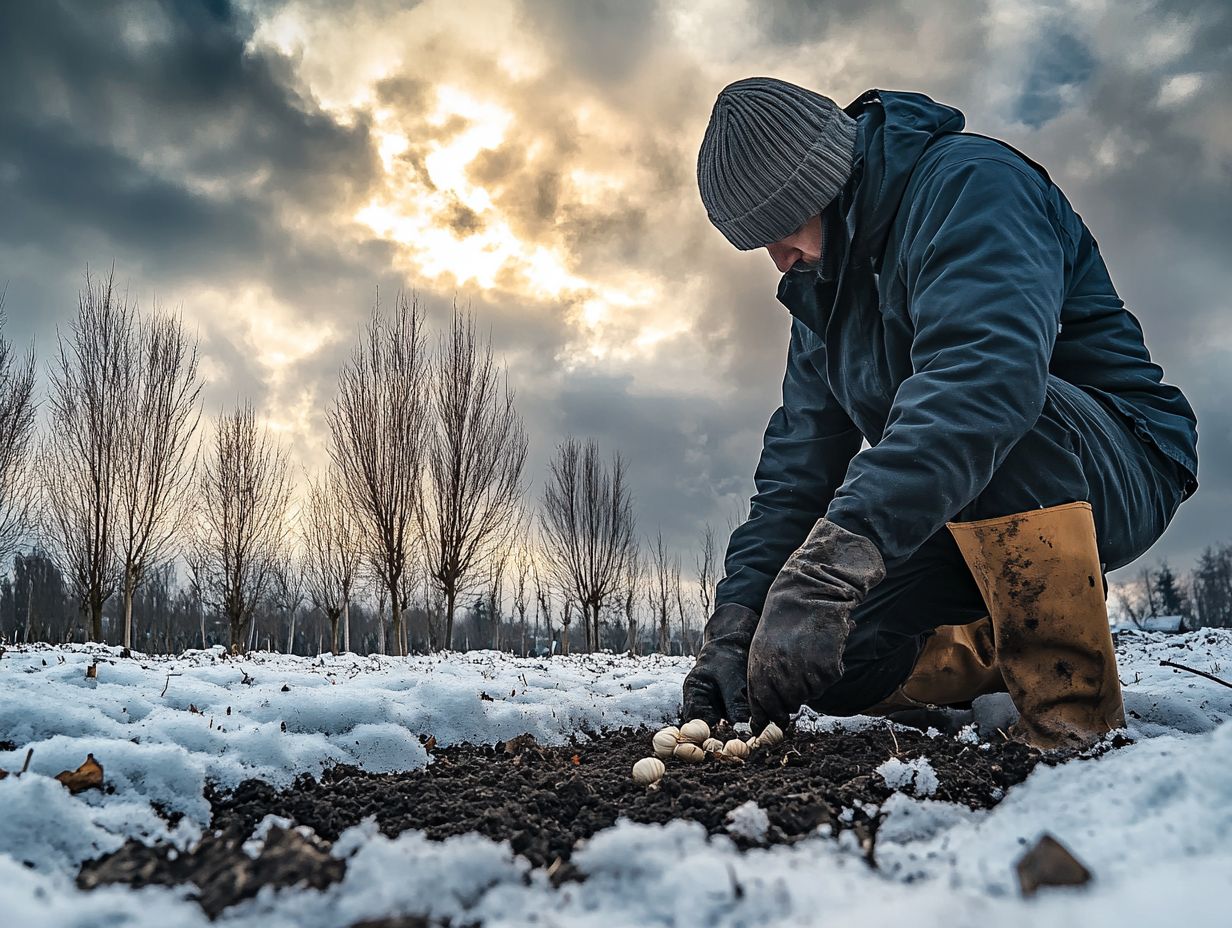
Preparing the soil is an essential step in fostering optimal garlic growth, as it establishes a nutrient-rich environment that promotes robust root development. Start by testing your soil for pH and nutrient levels.
Once you have that information, consider amending it with organic matter and fertilizers like chicken manure or soybean meal to enhance nutrient management. Proper drainage and aeration are critical; garlic thrives in loose, well-drained soil.
After completing the soil tests, incorporate compost or aged manure to improve both soil structure and fertility. Mixing in sand can also enhance drainage, particularly in heavier soils that tend to retain water. A gentle tilling can aerate the ground, encouraging healthy root growth.
Maintaining soil health throughout the growing season is vital. Periodically check moisture levels and use mulch to retain moisture while suppressing weeds. This careful attention to your soil boosts garlic growth and supports a healthy garden.
Planting Garlic in Winter
Planting garlic in winter demands meticulous attention to timing and technique, ensuring both successful growth and a fruitful harvest. Act quickly get those garlic cloves in the ground before winter frost sets in for a thriving spring harvest!
Start by choosing the right garlic cloves; they should be nestled into the soil once the temperature dips below 60 F, which usually happens around October in many areas. Space those cloves about 4-6 inches apart in well-prepared soil, and cover them with mulch for extra protection.
This thoughtful approach enables the garlic to establish its roots before winter s frost arrives and paves the way for a bountiful production of garlic scapes in the spring.
Step-by-step Guide
A step-by-step guide to planting garlic will ensure you create the perfect environment for your garlic cloves to thrive. Start by preparing your planting site loosen the soil and mix in some organic fertilizers.
Then, select healthy garlic cloves for planting. When you plant them, ensure the pointed end is facing up and bury them about 2-3 inches deep. Follow this with thorough watering to establish moisture.
Pay close attention to your soil preparation; it s the foundation for healthy growth. Aim for rich, loamy soil that allows for excellent drainage and nutrient retention.
In terms of planting depth, clove placement is crucial. If they re too shallow, they might end up exposed, while planting them too deep can hinder their sprouting.
After you ve planted, your initial watering should be thorough but not excessive ensure the soil is moist but not soggy. Be mindful of common mistakes, like planting too early or too late in the season, and don t forget to keep an eye on moisture levels. Implementing a regular schedule to check the soil moisture will help you maintain optimal growing conditions.
Caring for Winter Garlic
Caring for winter garlic is crucial for cultivating a vibrant and productive crop. Your key practices will revolve around proper watering, keeping your plants healthy and free from illness, and monitoring for garlic scapes as the growing season unfolds.
Regularly assess the soil’s moisture levels, especially during dry spells. Water your garlic as necessary to encourage robust growth. Stay vigilant for any signs of disease affecting your garlic. By using organic methods to address issues early, you’ll prevent them from escalating into larger problems.
Watering and Fertilizing
Proper watering and fertilizing are essential for your garlic to thrive, as they directly impact bulb development and overall plant health. In the early stages, keep the soil consistently moist, but be careful overwatering can lead to diseases that affect your plants.
As your plants mature, gradually reduce the frequency of watering while closely monitoring nutrient levels. Incorporating organic fertilizers, like chicken manure, will support robust bulb formation.
Understanding the distinct phases of growth is vital. During the initial sprouting phase, water gently and regularly to promote healthy root establishment. As the season progresses, moisture needs will fluctuate, so keep an eye on the weather and adjust your watering schedule accordingly.
Alternating organic fertilizers every few weeks provides your garlic with a balanced supply of essential nutrients, including nitrogen, phosphorus, and potassium. This approach not only ensures vigorous growth but also fosters optimal bulb size and flavor, setting you up for a successful harvest when the time arrives.
Protecting from Frost
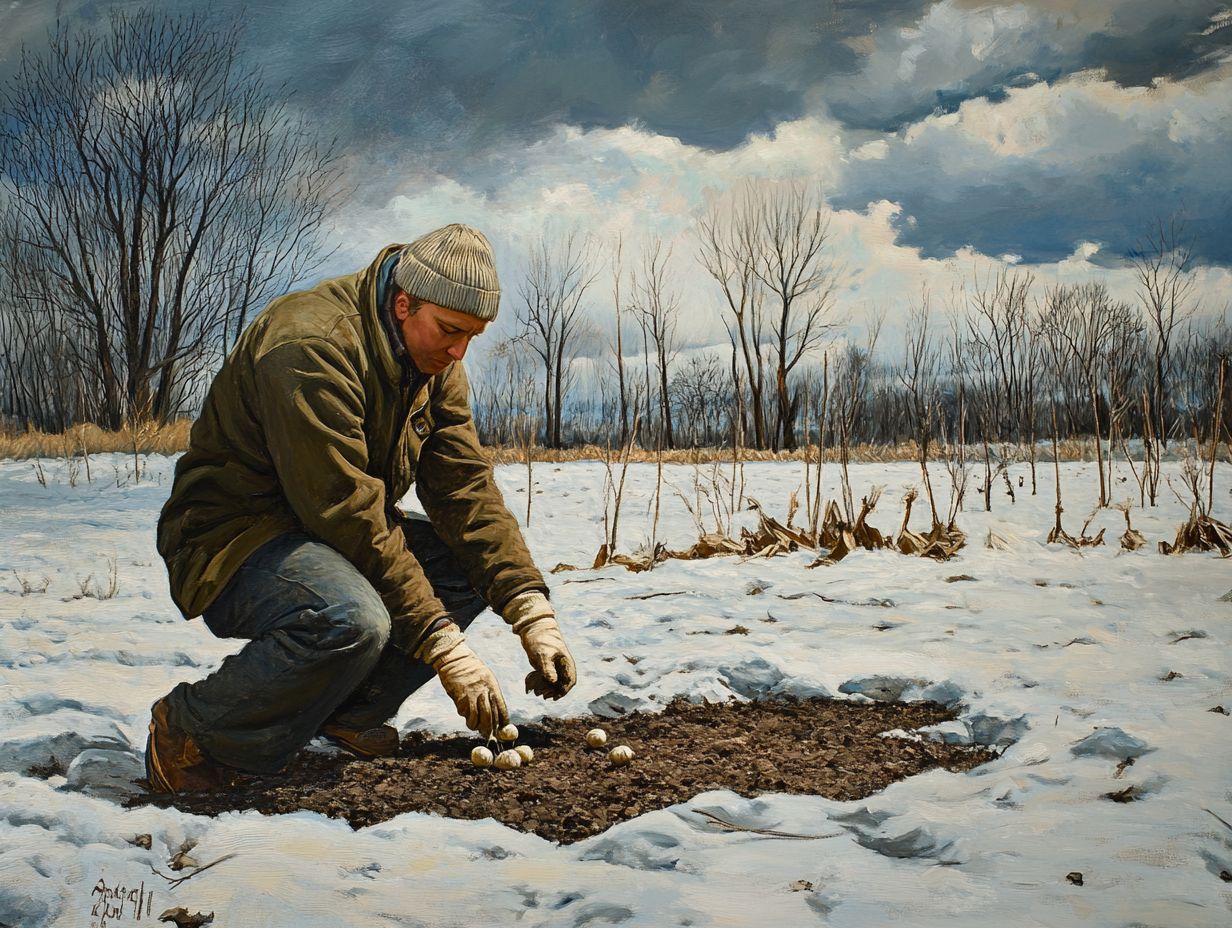
Protecting your garlic from frost is essential for ensuring the survival and success of your bulbs throughout the winter months.
Using the right techniques, you can shield your crop from harsh elements. Organic mulch, such as straw or shredded leaves, insulates the soil and enriches it as it decomposes, providing long-term benefits for your garden.
Along with organic mulch, using row covers adds an extra layer of defense, trapping heat and preventing frost from settling directly on your plants. Keep a close watch on weather forecasts to implement timely interventions, like adding protective layers during sudden temperature drops. This ensures your garlic remains safe from unexpected frost threats.
Harvesting and Storing Winter Garlic
Harvesting and storing winter garlic is essential for maintaining the quality and longevity of your garlic bulbs. Perfect timing is key to achieving optimal flavor and storage potential.
Garlic is ready for harvest when the lower leaves start to yellow and dry, typically in mid to late summer. When the moment arrives, gently lift the bulbs from the ground using a fork, taking care not to bruise them.
After harvesting, allow the bulbs to cure in a shaded, dry area, setting the stage for proper storage.
When and How to Harvest
Knowing when and how to harvest garlic is crucial for ensuring you achieve the best quality bulbs, packed with maximum flavor and longevity. Garlic signals its readiness when the lower leaves begin to yellow and dry out, indicating the bulbs have reached their full size.
A careful examination of the upper leaves offers additional insights. When about half of them start to yellow, it s generally a clear sign that harvest time is approaching.
Local climate conditions significantly influence your timing, as variations in temperature and rainfall can affect the growth cycle. Monitor these factors closely to pinpoint the optimal harvest window.
Once you’ve lifted the bulbs, place them in a cool, dry area for proper curing, enhancing their flavor and extending their shelf life.
Proper Storage Techniques
Implementing proper storage techniques for your garlic bulbs is crucial for preserving their quality, flavor, and longevity. Whether you’re planning to whip up culinary delights like garlic powder or other dishes, these tips will help!
After harvesting, let the bulbs cure in a dry, well-ventilated area for several weeks. This process enhances their flavor and extends their shelf life. Store your cured garlic in a cool, dark place. Avoid moisture and sunlight to prevent spoilage.
Utilizing nets or mesh bags for storage can significantly improve air circulation. This reduces the risk of mold and maintains optimal conditions for your garlic. These materials allow for greater airflow while keeping the bulbs securely stored.
Don’t hesitate to experiment with various forms of garlic! Garlic powder offers a convenient alternative, allowing for easy incorporation into recipes without the hassle of chopping. Dehydrated garlic is also a versatile option, perfect for marinades or sprinkled over dishes for an extra burst of flavor.
By exploring these different methods and storage options, you can fully appreciate the unique taste that garlic brings to your culinary creations. Get ready to enhance your dishes with these techniques!
Frequently Asked Questions
What is the best time to plant garlic in winter?

The ideal time to plant garlic in winter is late fall, about 4-6 weeks before the ground freezes. This gives the garlic enough time to establish roots before the soil becomes too cold.
Can I plant garlic in winter if the ground is frozen?
No, garlic bulbs need to be planted in unfrozen soil. If the ground is frozen, wait until it thaws before planting.
What is the best location to plant garlic in winter?
Choose a sunny spot in your garden with well-drained soil. Avoid areas with standing water or where water tends to pool.
How should I prepare the soil for planting garlic in winter?
Add compost or aged manure to the soil before planting to improve drainage and add nutrients. Garlic prefers slightly acidic soil, so you may need to amend it with lime if your soil is too alkaline.
Do I need to water my garlic during the winter?
No, garlic bulbs do not require water during the winter. However, make sure the soil is moist when planting to help with root establishment.
What should I do if the weather turns unseasonably warm after I plant my garlic in winter?
If temperatures rise above 60 F, cover your garlic bed with mulch to keep the soil from drying out. Once the weather cools down, you can remove the mulch to allow for proper growth.

